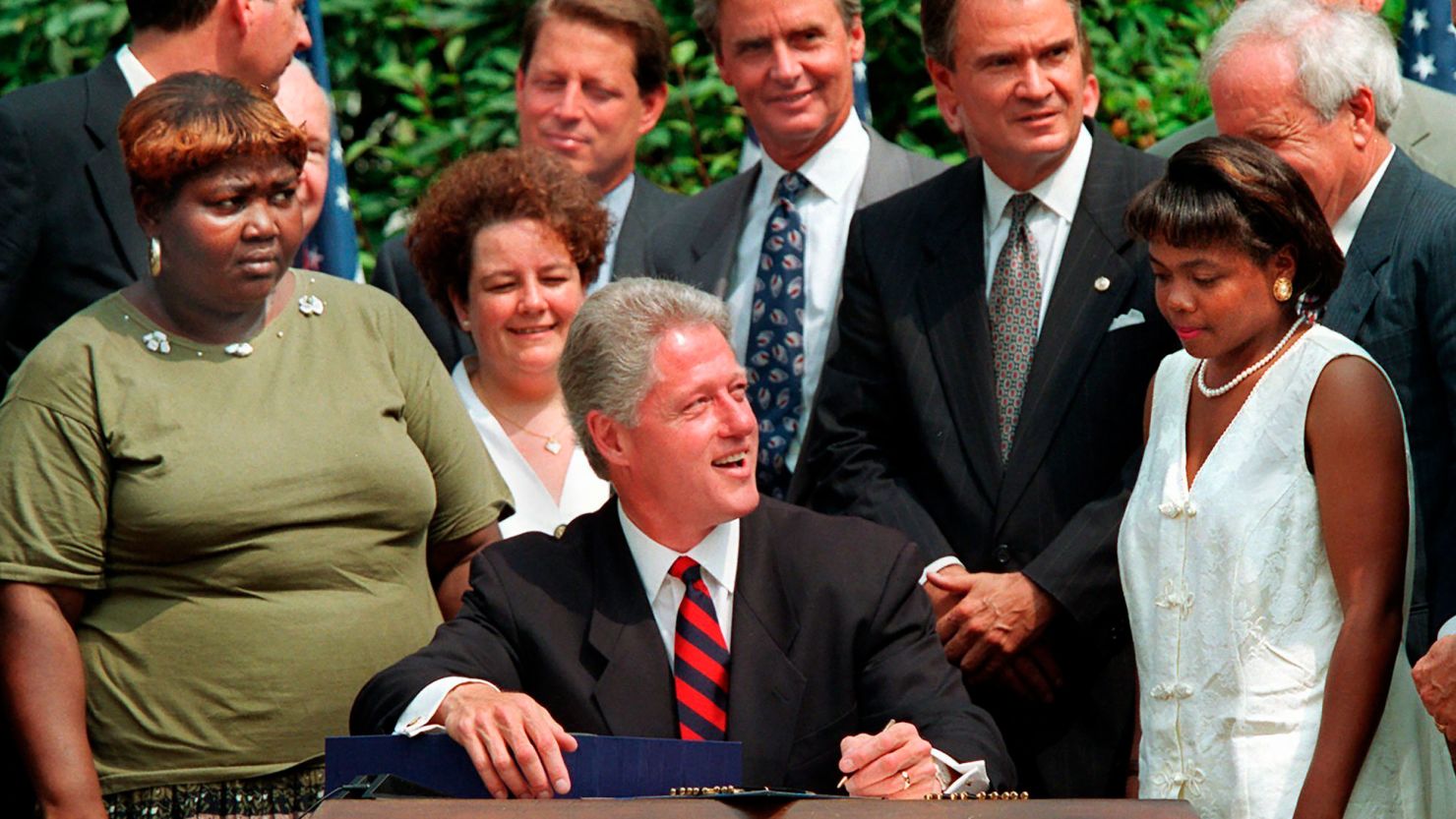Editor’s Note: Oren Cass is the executive director at American Compass, a policy shop developing a new conservative economic agenda. The views expressed in this commentary are his own. View more opinion on CNN.
A new report confirms the enormous progress that America has made in reducing child poverty – and the enormous problem that progressives have coping with that fact.

In “Lessons from a Historic Decline in Child Poverty,” Child Trends, a nonpartisan research organization focused on children and youth, reports that child poverty fell from 27.9% in 1993 to 11.4% in 2019, while deep poverty (households with income less than half the poverty line) fell from 7.3% to 3.2%. These figures use an adjusted poverty measure that accounts for regional differences, some expenses (including taxes) that households face and incoming transfers they receive from safety-net programs.
The starting point of 1993 is notable because it came just before Congress passed the Personal Responsibility and Work Opportunity Act of 1996 (commonly known as “welfare reform”). Welfare reform replaced the open-ended program of cash grants to parents with little or no income, called “Aid to Families with Dependent Children” (AFDC), with a less generous, time-limited, work-required program called “Temporary Assistance to Needy Families” (TANF).
The change, progressives predicted, would plunge millions into poverty. Two of President Bill Clinton’s top social-services administrators resigned in protest. “If, in 10 years time, we find children sleeping on grates, picked up in the morning frozen, and ask, ‘Why are they here, scavenging, awful to themselves, awful to one another,’ will anyone remember how it began?” asked then-Sen. Daniel Patrick Moynihan of New York.
The welfare rolls declined precipitously – from 5.1 million families in 1994 to just over 2 million in 2000 – but, as Child Trends shows, destitution was not the result. Instead, the teen pregnancy rate plunged, more people moved into the workforce and safety-net benefits like the Supplemental Nutrition Assistance Program (SNAP, or “food stamps”) and wage supports like the Earned Income Tax Credit (EITC) picked up the slack. Child Trends does not include public health insurance coverage in its analysis, but Congress has also since created the State Children’s Health Insurance Program and the Affordable Care Act.
One need not be a policy expert to make sense of what is now more than half-a-century of evidence from the War on Poverty. In the first era, built upon AFDC’s offer of cash to non-working families, the child poverty rate declined from 28.4% in 1967 to 27.9% in 1993. In the second era, ushered in by welfare reform and characterized by a strong safety net that insisted on the attachment of cash to work, the decline was more than 30 times larger.
Progressives do not celebrate this success. Instead they complain that “the federal safety net for poor families was torn to shreds,” that it “barely exists at all,” and that it is “woven … with deliberate and large holes” and “does not want to” help people out of poverty. When Ron Haskins, a leading architect of welfare reform, retired from the Brookings Institution in 2020, progressive policy analyst Matt Bruenig and his spouse The Atlantic writer Elizabeth Bruenig released a podcast episode titled “[expletive] Ron Haskins. [expletive] Welfare Reform.”
The pattern holds for discussion of new policies as well. When proposals emerged last year for an unconditional “child allowance” that would be paid to all families for each of their children, regardless of whether anyone in the family worked, I wrote in the New York Times that a generous new family benefit was a good idea, but it should go only to families with income of their own. Commentators on the left called this a “monstrous” idea and said I was “insisting that starving some kids is important for society.”
In this view, it seems, one either supports helping the poor through unconditional cash – or one hates the poor. Which policies seem empirically most effective in fighting poverty is rather beside the point for these critics.
Child Trends itself provides the most perplexing illustration of the cash-or-bust mentality. Concluding its thorough report on the positive results of a safety net that reserves cash for those who are working, its first recommendation is to, “Recraft social safety net programs to prioritize child needs and determine eligibility based on child needs, rather than parent characteristics.”
Perhaps this sounds benign in the obtuse verbiage of technocracy. But the authors quickly clarify what they mean: “Current policies exclude children from the full benefits of the social safety net by setting eligibility criteria based on their parents’ characteristics, such as work status and immigration status. In contrast, a social safety net designed to alleviate child poverty would be intentionally more inclusive by centering children’s needs, and by eliminating requirements based on other parent characteristics.”
In other words, give families cash regardless of whether they are working – precisely the logic of the War on Poverty’s initial approach, which made so little progress. Admittedly, the logic is alluring and seems simple enough. If people are poor because they don’t have enough money, give them more money and they will no longer be poor.
Indeed, the Census Bureau just reported a further decline in child poverty in 2021 thanks to the checks mailed out by the Biden administration that year. What could be wrong with that?
What’s wrong is that the goal of battling poverty is to move families out altogether, not sustain them on public programs indefinitely, and that can’t happen unless people receiving support are connected to the workforce and can begin to move up.
Alongside the Child Trends measure, analysts must look also at whether families are earning enough on their own, without safety-net programs, to clear the poverty threshold. The data there tell the same story. Under a poverty measure that does not consider taxes and transfers, the child poverty rate actually rose in the War on Poverty’s early decades, from 27.4% in 1967 to 30.7% in 1993. After welfare reform, that figured fell to 20.3% by 2019.
One problem with unconditional cash may be that it creates the wrong incentives. The availability of the cash reduces the consequences of bad decisions. And the lack of a clear connection to work reduces the encouragement to make better ones.
Another problem is the peculiar set of values asserted by unconditional cash – about what members of the community owe to one another. The traditional American view is that everyone has an obligation to make productive contributions to the society and support themselves and their families; as a nation, we owe the most to those who are working to help themselves.
But there’s another view of the social contract, stated succinctly by economic consultant and Georgetown professor Hal Singer, who tweeted recently that all one should have to do to earn a guaranteed income from the government is “obey the laws.” If that were true, then the American safety net would look stingy and reserving cash support for those who work would be a grave injustice indeed.
What do we owe one another, and how do we help the less fortunate among us? In the 1990s, welfare reform appeared to provide a clear answer to that question in principle, and the subsequent decline in poverty a clear answer in practice. But with the passage of time, rather than learn the lesson well, progressives forgot it. The political battle will have to be fought all over again.


